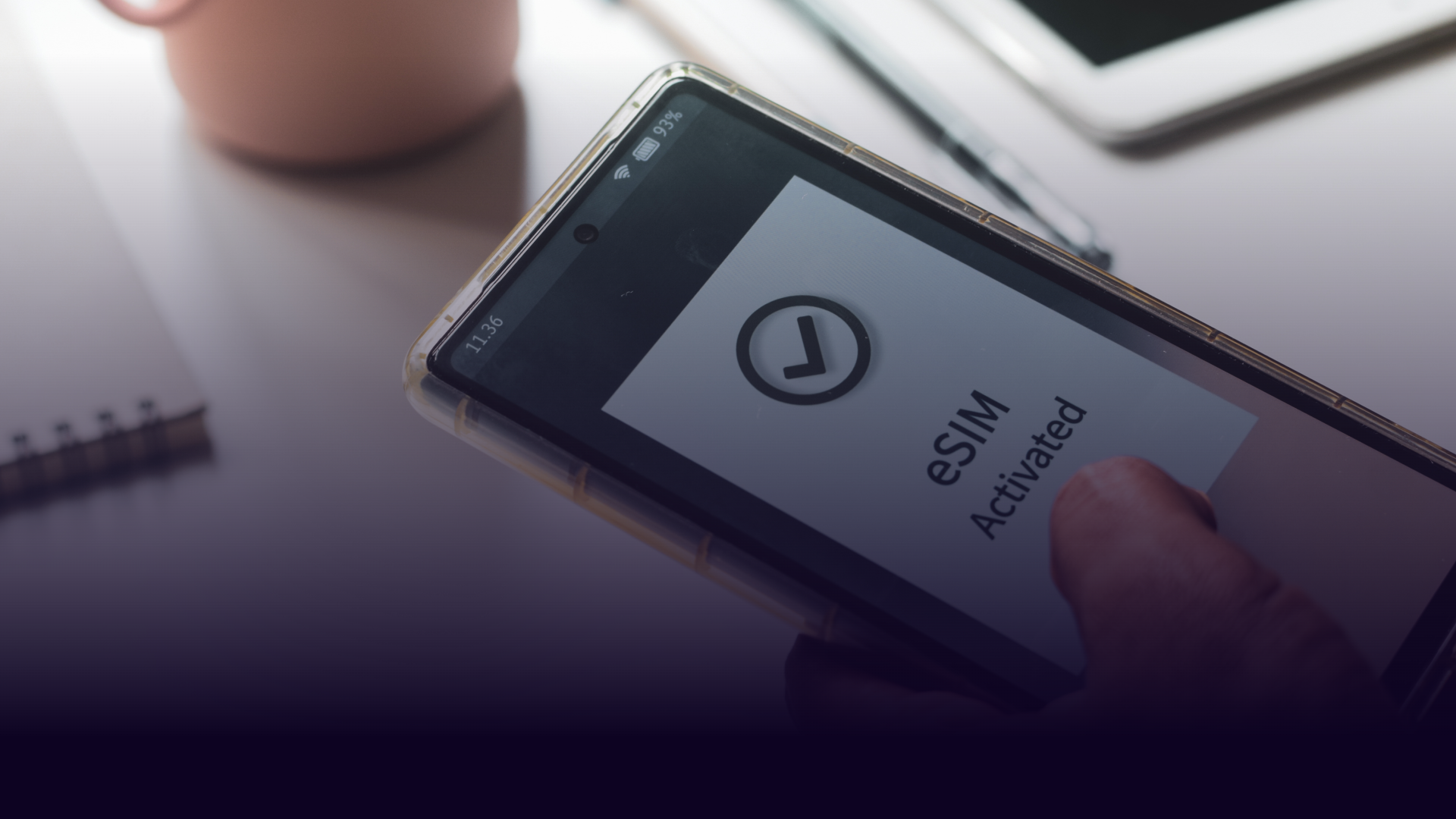eSIMs have gone from an emerging technology to a mainstream solution in mobile connectivity. In the U.S., all new iPhones have been eSIM-only for at least two years, and Canada’s latest iPhone 16 has followed suit. Other major manufacturers are quickly adopting the trend, and by 2030, 70% of cellular devices are expected to support eSIM technology. In North America, which includes both the U.S. and Canada, there are 184 million eSIM smartphone connections compared to 172 million traditional SIMs.
eSIMs are part of a larger shift towards a digital-native generation. Nearly two thirds of customers prefer a digital-first, self-help approach to managing their mobile device experience. For BYOD (Bring Your Own Device) cases, onboarding no longer requires a trip to a store – it can happen instantly, in-app, without a physical SIM or in-person assistance. This shift is gradually reducing the role of in-store activations, which were once central to upselling, contract renewals and customer relationship-building.
Despite this, many mobile operators still struggle to deliver a seamless digital experience, particularly at key lifecycle moments – such as mobile device support – which can trigger churn if not handled appropriately in the moment or even proactively. Mobile operator NPS drops significantly at various points in the customer journey, often due to a lack of seamless, contextual digital solutions that keep customers engaged. eSIMs lower barriers for customers to switch operators, because of the simplicity of onboarding. This increases the risk of churn in the event of a single poor or several poor experiences and defection to a competitor. In this environment, customers will gravitate toward carriers that provide effortless onboarding, proactive engagement, and a seamless transition between digital and physical touchpoints. With 76% of customers saying they would stay loyal to an operator that operates highly digitized journeys – and 73% willing to switch for a more seamless experience – operators that fail to prioritize frictionless digital interactions risk losing customers to more agile competitors.
To stay competitive, mobile operators must prioritize digital-first experiences that eliminate friction and meet evolving customer expectations. Even when a customer visits a retail store, they must be able to pick up exactly where they left off in-app, ensuring a seamless omnichannel experience.
To stay competitive, mobile operators must optimize their most critical remote touchpoint – their mobile app – as a primary driver of customer acquisition and retention. This means:
- Engaging customers remotely with self-service options to handle more inquiries in-app, reducing reliance on call centers and in-store visits – especially .
- Leveraging real-time device intelligence – data insights from device diagnostics, configuration information (IMEI, make and model, etc.) and CRM information allow mobile operators to proactively identify issues before they set in and, subsequently, the upsell opportunities. This takes place at the onboarding phase, where being able to remotely turn a mobile device into a data source can enable much better management of a customer across the device lifecycle.
When data and digitization work together, mobile operators can combine proactive care, omnichannel consistency and personalized engagement to create frictionless experiences that drive loyalty and long-term customer satisfaction.
With real-time device intelligence, mobile operators can anticipate issues before they impact customers, reducing frustration and improving retention. Detecting problems early enables proactive engagement, such as diagnostic prompts or upgrade offers, helping boost satisfaction and loyalty – when issues are fixed, NPS increases by 5 points.
While eSIM activations are shifting in-app, retail still plays a role in device upgrades, trade-ins and support. A digitized, connected experience ensures customers can start a process in-app, continue in-store if needed, and complete it effortlessly. A digital-first approach has led to a 10-point jump in NPS.
Personalization further strengthens engagement and loyalty. Operators can proactively target users with personalized offers at key points in the device lifecycle, keeping customers engaged before they consider switching – customers who receive contextualized offers are more likely to respond positively, boosting NPS by 6 points.

eSIMs have fundamentally changed the way customers interact with their carriers, increasing risk of churn with less of a need for physical interaction, but also making onboarding faster and remote, digital engagement capabilities more important than ever. As eSIM adoption accelerates, mobile operators must evolve beyond traditional activation and retention strategies. By focusing on frictionless app experiences, omnichannel integration, and data-driven personalization, carriers can turn the rise of eSIMs into a powerful opportunity for growth.




